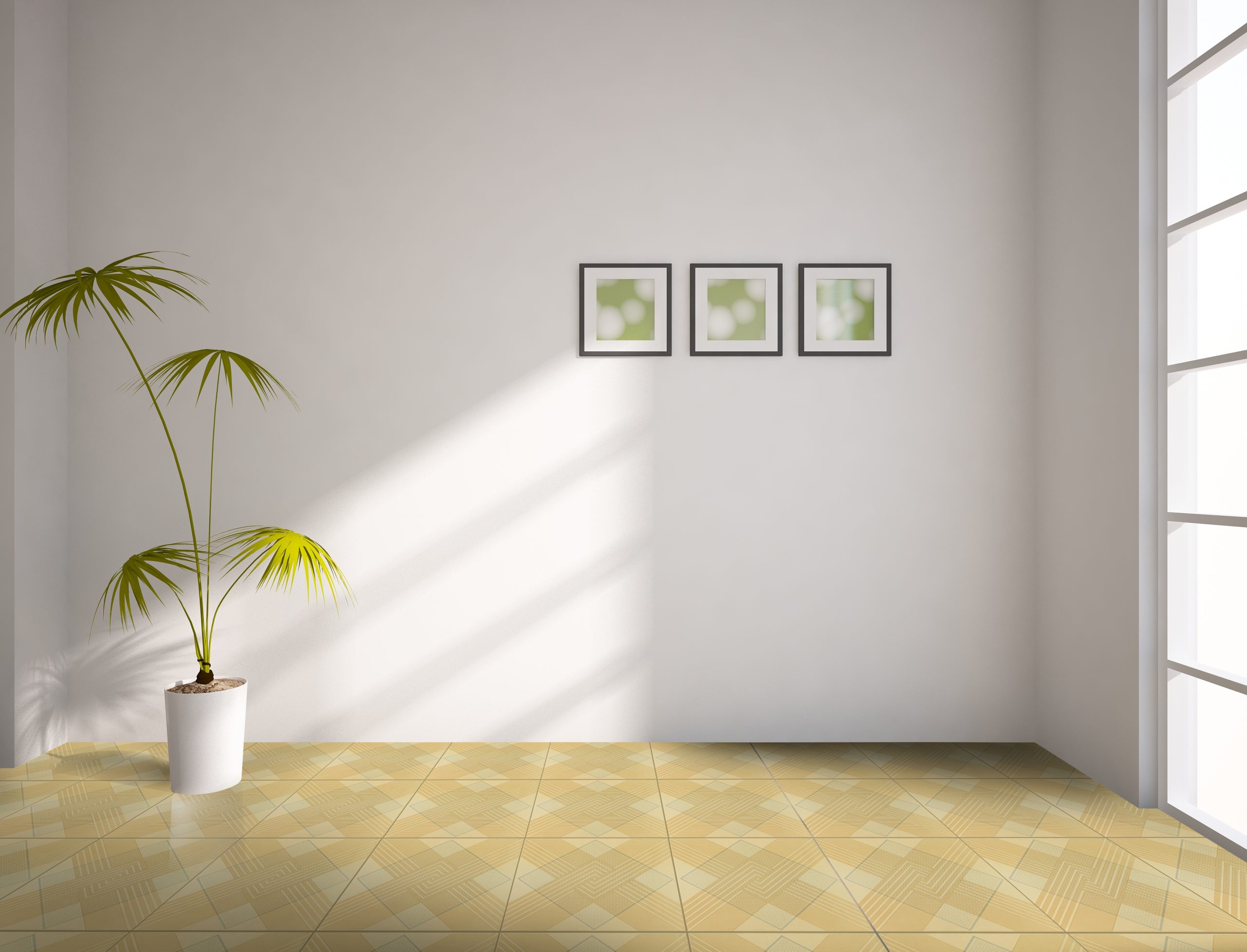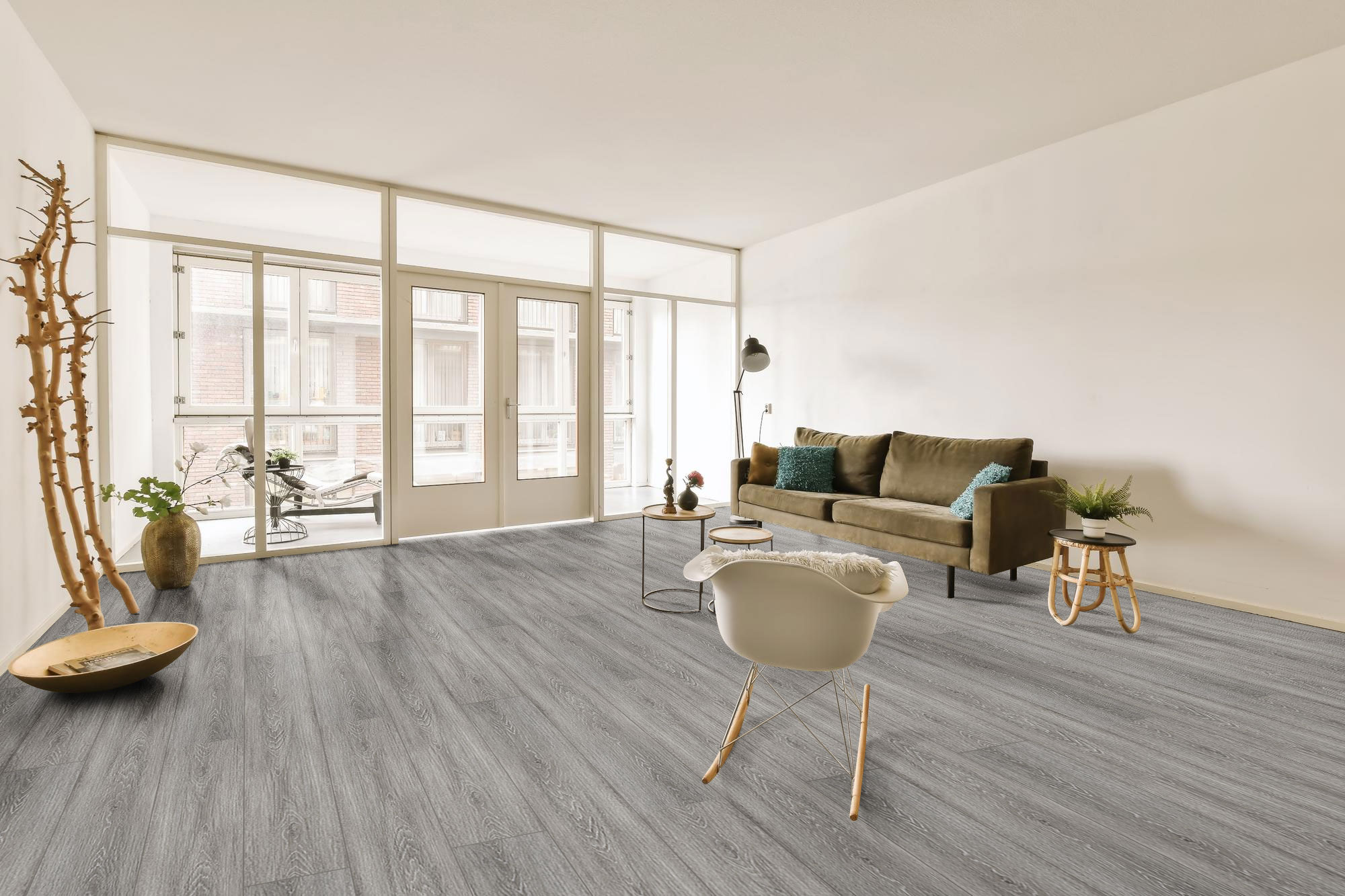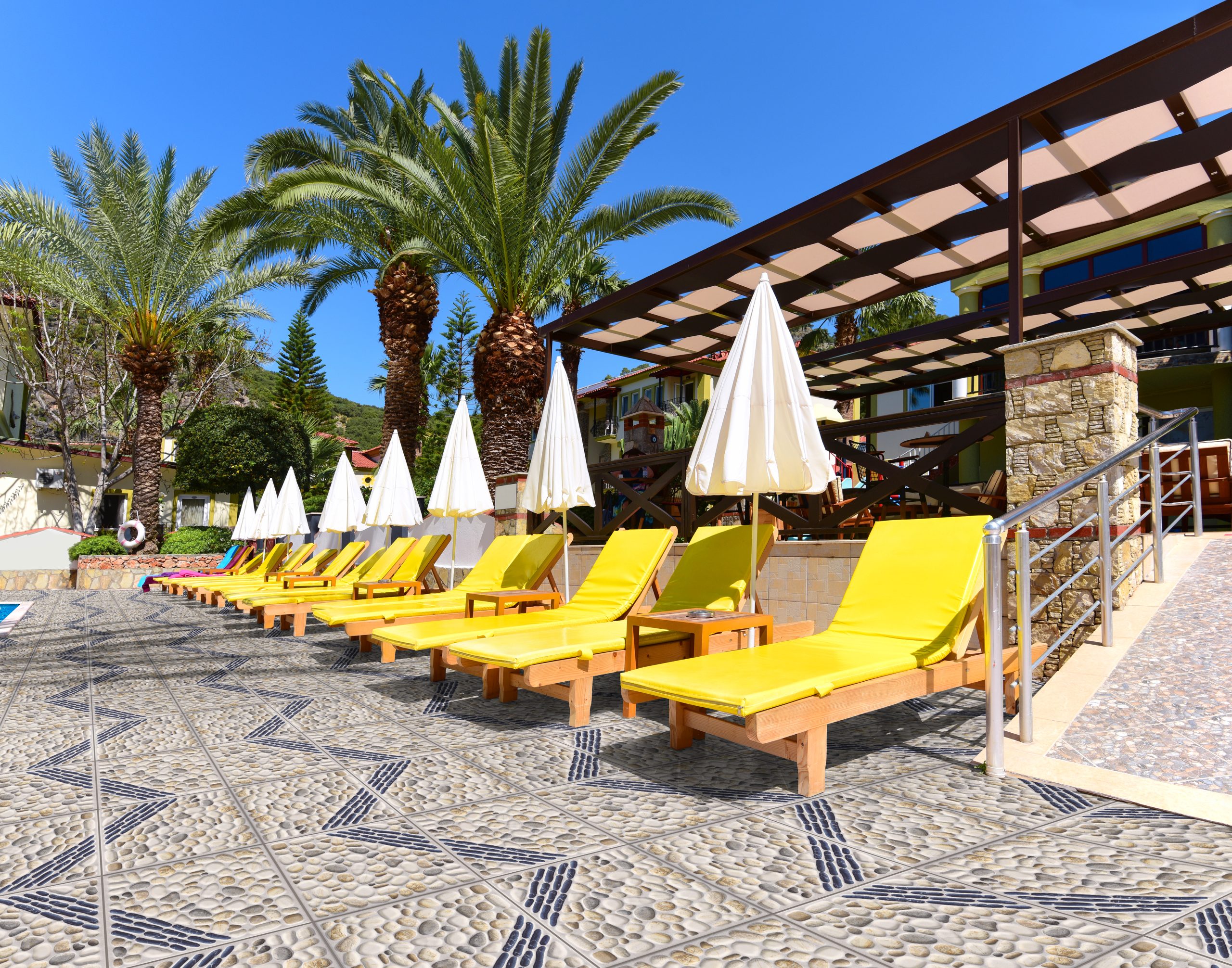In this blog post, we will thoroughly compare natural wood flooring vs. wood-look tiles, examining longevity, maintenance, aesthetics, pricing, and installation issues. Whether you prefer the authenticity of natural wood or the practicality of porcelain tiles, recognizing the differences between these options will allow you to make an informed selection based on your preferences and lifestyle. When it comes to flooring options, wood flooring has long been used for its warmth and charm. However, with the advancement of technology, wood-look tiles have emerged as an appealing alternative, combining the aesthetic allure of wood with added durability and versatility.

[20×120] 201201J
Aesthetics
Each option offers unique charm and visual impact when comparing natural wood floors to wood-look porcelain or ceramic tiles. Natural wood floors exude warmth, character, and authenticity, with each plank showcasing distinctive grain patterns, knots, and imperfections. From the classic elegance of oak to the rustic charm of reclaimed wood, natural wood floors create a timeless and inviting atmosphere that enhances any interior decor. On the other hand, wood-look porcelain tiles are designed to mimic the appearance of natural wood with remarkable realism. With advancements in digital printing technology, porcelain tiles can replicate the texture, color variations, and grain patterns of different wood, offering versatility in design options. Because of this technology, we can replicate the feel and look of wood without having to cut down trees, thereby minimizing environmental impact.
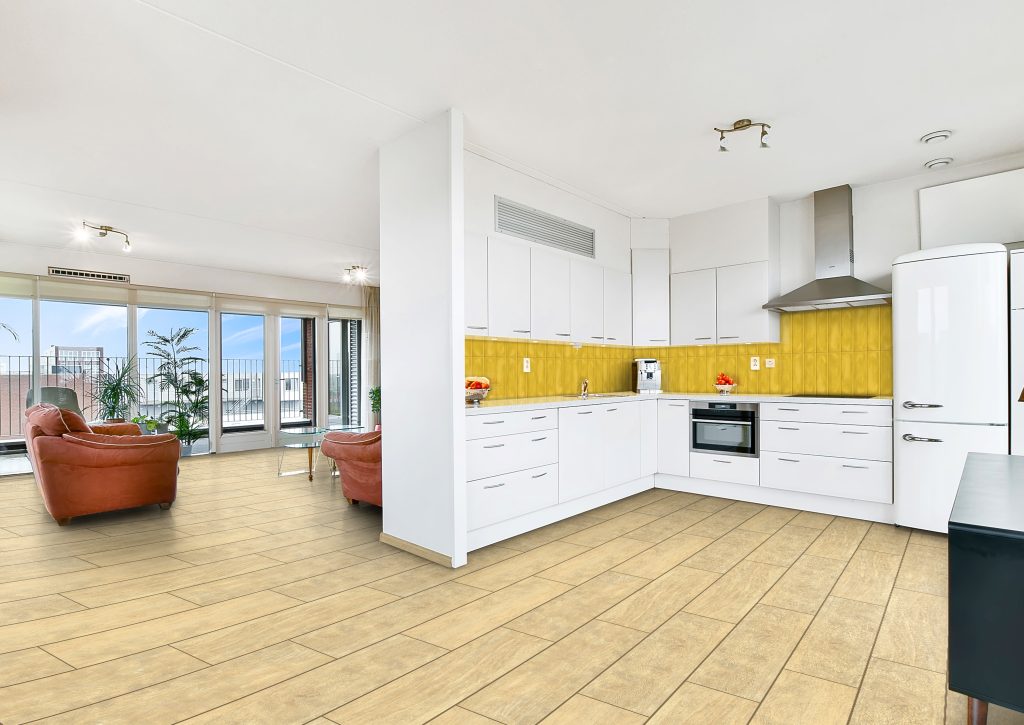
[7.5×30] 730WEP3 + [20×100] 2100P1
Durability
Durability is a crucial consideration when selecting flooring materials, as it directly impacts the longevity and performance of your investment. Durability is vital when comparing natural wood floors and wood-look porcelain tiles. Natural wood floors are susceptible to scratches, dents, fire warping, termites, and moisture damage, requiring regular maintenance and refinishing to preserve their appearance. However, solid hardwood floors can last for generations with proper care and maintenance. On the other hand, wood-look porcelain tiles offer superior durability and resistance to wear and tear. Porcelain tiles are impervious to scratches, stains, fires and moisture, making them ideal for areas exposed to water, such as kitchens, bathrooms, and entryways. Additionally, porcelain tiles are less prone to fading and discoloration from sunlight exposure, ensuring long-lasting beauty and performance.
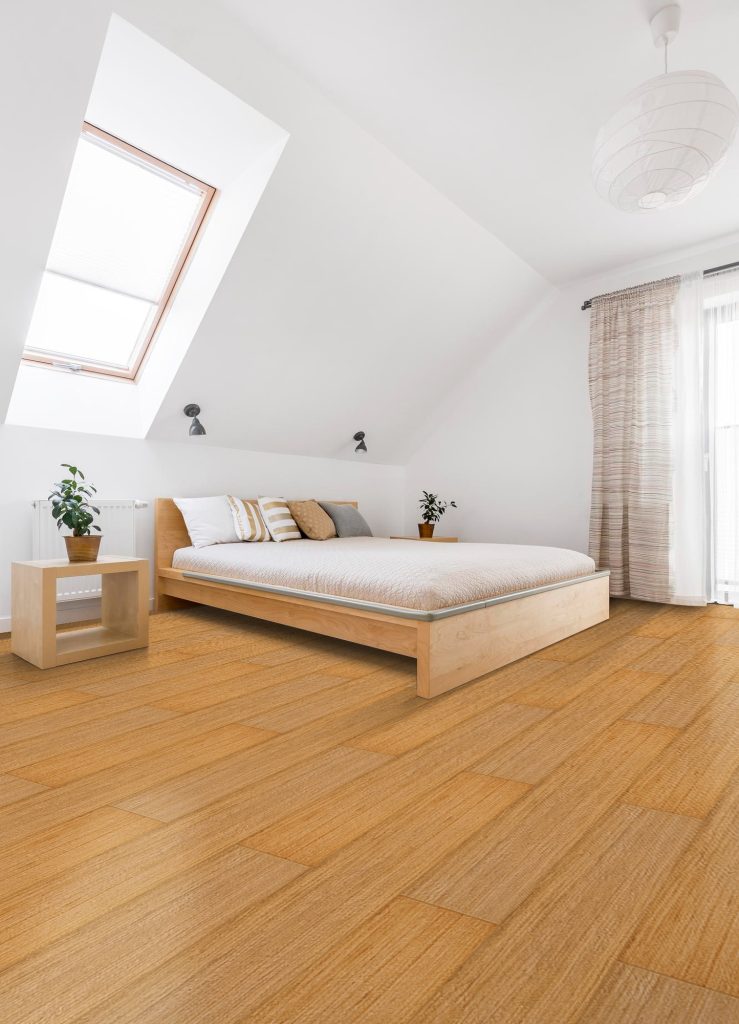
[20×100] RD209
Maintenance
Maintenance requirements emerge as a crucial factor. Natural wood floors demand regular care, including sweeping, vacuuming, and periodic refinishing to maintain their luster and durability. Additionally, wood floors are susceptible to scratches, stains, and moisture damage, necessitating careful attention to prevent deterioration over time. Conversely, wood-look porcelain tiles offer ease of maintenance, requiring only regular sweeping and mopping with a mild detergent to keep them looking pristine. With their resistance to scratches, stains, and moisture, porcelain tiles provide a hassle-free option for busy households seeking low-maintenance flooring solutions without compromising aesthetics.

[20×100] 2100P3
Cost
Natural wood floors often come with a higher upfront cost due to the price of the raw material, installation labor, and finishing. Additionally, the maintenance and refinishing expenses associated with wood floors can add to the long-term cost of ownership. Conversely, wood-look porcelain tiles offer a more budget-friendly alternative to natural wood, providing the aesthetic appeal of wood without the associated high costs.
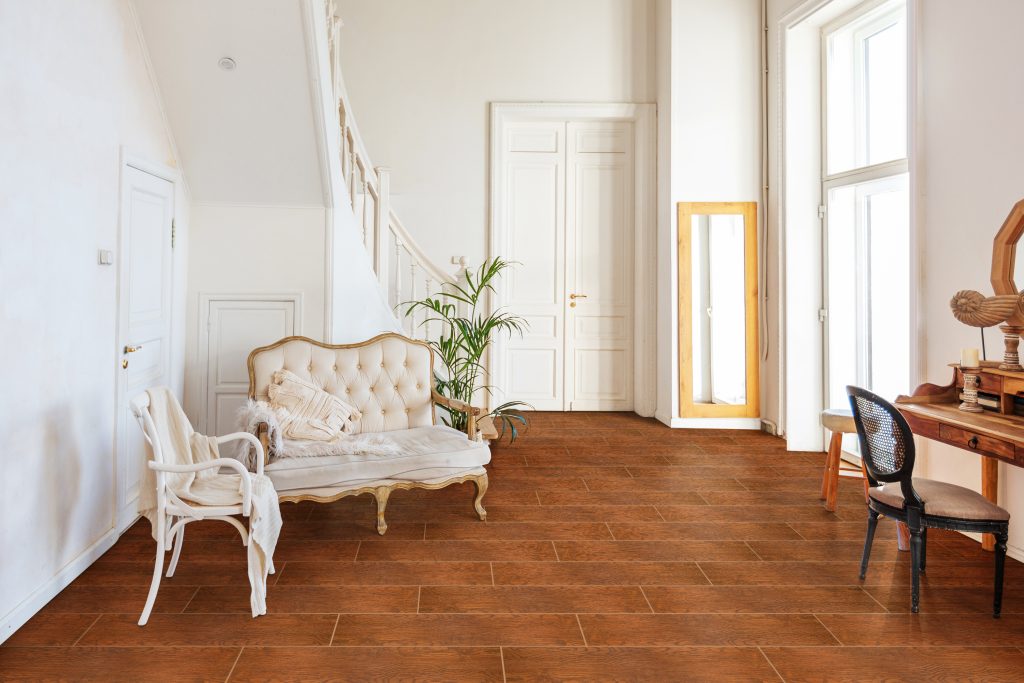
[20×100] J206
Installation
Installation is a critical aspect to consider, as it can impact both the timeline and cost of a renovation or construction project. Natural wood floors require meticulous installation by skilled professionals, including subfloor preparation, plank laying, and finishing. The installation process for wood floors can be labor-intensive and time-consuming, often requiring specialized tools and expertise to achieve optimal results. On the other hand, wood-look porcelain tiles offer a more straightforward installation process, with options for traditional tile-setting methods such as thin-set mortar or adhesive. With their uniform size and shape, porcelain tiles are easier to handle and install, making them suitable for DIY projects and professional installations.
Key Takeaway
Both options offer unique advantages and considerations when comparing natural wood floors and wood-look porcelain tiles. Natural wood floors exude timeless beauty and charm but require regular maintenance and may be susceptible to wear and moisture damage. Wood-look porcelain tiles, on the other hand, provide the aesthetic appeal of wood with added durability, versatility, and ease of maintenance. Whether you prefer natural wood’s warmth or porcelain’s practicality, the choice ultimately depends on your needs, preferences, and budget constraints. By considering factors such as aesthetics, durability, maintenance, cost, and installation, you can make an informed decision that enhances the beauty and functionality of your space for years to come.
Now that you’re armed with the knowledge and tips to pick the right tiles for your home, it’s time to turn your vision into reality. Take the first step and embark on your tile transformation journey today!



